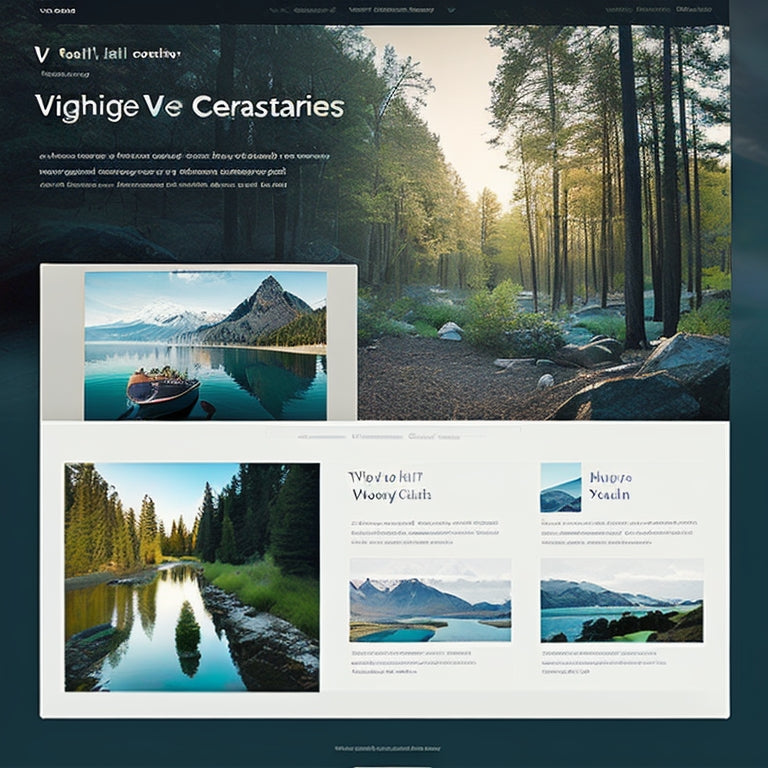
The Benefits of HTML Sitemaps for SEO and Users
Share
This article explores the benefits of HTML sitemaps for both SEO and users.
An HTML sitemap serves as a comprehensive directory of a website, facilitating navigation and enhancing user experience.
It differs from XML sitemaps, which are primarily designed for search engines.
By organizing large and complex websites, HTML sitemaps enable the creation of internal links, crucial for SEO.
Examples from companies such as H&M Group and Target demonstrate various approaches to designing HTML sitemaps.
Overall, HTML sitemaps contribute to improved user experience, efficient content discovery for search engines, and enhanced site navigation.
- HTML sitemaps improve user experience and make websites more user-friendly.
- They organize large and complex websites, acting as a directory for webpages.
- HTML sitemaps help search engines find content quickly, improving overall site navigation.
- They allow for the creation of internal links, which are important for SEO.
Benefits of HTML Sitemaps for SEO and Users
This discussion will focus on the benefits of HTML sitemaps for both SEO and user experience.
Improved site navigation is one key point, as HTML sitemaps provide a clear and organized structure for users to easily find the content they are looking for.
Additionally, enhanced user experience is another important benefit, as HTML sitemaps make it easier for visitors to navigate and explore a website, leading to a more positive and efficient browsing experience.
Moreover, HTML sitemaps contribute to faster content discovery, allowing users to quickly locate relevant information, while also providing SEO optimization benefits by helping search engines index and rank webpages more effectively.
Lastly, HTML sitemaps offer easy website organization, enabling website owners to structure their content in a logical and accessible manner.
Improved Site Navigation
Improved site navigation is a key advantage of using an HTML sitemap. It provides users with a clear and organized directory of webpages on a website. By displaying the main pages and subpages of a site, an HTML sitemap enhances the accessibility of content, allowing users to easily find the information they need.
This improved navigation not only benefits the users by reducing the time and effort required to locate specific pages, but it also increases user engagement by encouraging them to explore more of the website. By presenting a comprehensive overview of the site's structure, an HTML sitemap enables users to navigate through different sections and categories, facilitating a seamless browsing experience.
Thus, incorporating an HTML sitemap can greatly enhance the accessibility and user engagement of a website, providing a valuable tool for both users and website owners.
Enhanced User Experience
Enhanced user experience is achieved through the use of an HTML sitemap. It provides a clear and organized directory of webpages on a website, facilitating efficient navigation and improved accessibility for visitors.
By offering a comprehensive overview of the website's structure, an HTML sitemap allows users to easily locate the information they are seeking. This leads to improved accessibility, as users can quickly find the relevant pages they need.
The organized presentation of content in an HTML sitemap helps users engage more effectively with the website. They can quickly find the relevant pages they need, leading to a more efficient and satisfying user experience.
Additionally, the use of an HTML sitemap encourages user engagement by providing an intuitive navigation system. This encourages exploration and discovery, as users can easily navigate through different sections of the website.
Overall, the implementation of an HTML sitemap contributes to a positive user experience. It makes it easier for visitors to interact with the website and find the information they need.
Faster Content Discovery
Faster content discovery on a website can be facilitated by the implementation of an HTML sitemap. An HTML sitemap provides a clear and organized directory of webpages, allowing visitors to efficiently locate the information they are seeking.
By offering a comprehensive overview of the website's structure, an HTML sitemap enables users to quickly navigate to the desired content. This improves user experience by reducing the time and effort required to find relevant information.
Additionally, an HTML sitemap can contribute to faster indexing by search engines. The concise and logical structure presented in the sitemap aids in the crawling process, allowing search engines to more easily discover and index all the pages on the website.
This improved indexing can lead to better search rankings. With a better understanding of the website's content, search engines can evaluate its relevance and quality more effectively, potentially boosting its visibility and performance in search engine results.
SEO Optimization Benefits
Optimizing a website through the implementation of an HTML sitemap can contribute to increased visibility and search engine rankings. An HTML sitemap enhances website usability by providing an organized and accessible structure for users. It improves the overall user experience by allowing visitors to easily navigate through the site and find the desired content.
From an SEO perspective, an HTML sitemap helps search engines crawl and index the website more efficiently, leading to improved rankings. By including internal links to all important pages, an HTML sitemap also enhances the website's internal linking structure, which is a crucial SEO ranking factor.
Furthermore, an HTML sitemap promotes website usability by ensuring that users can find relevant information quickly and easily, enhancing their overall satisfaction with the website.
Easy Website Organization
One important aspect of website organization involves creating a clear and structured hierarchy of webpages. This involves organizing the content of a website in a logical manner, ensuring that users can easily navigate through the site and find the information they are looking for.
A well-designed website hierarchy allows for efficient content organization, ensuring that related pages are grouped together and accessible through clear navigation menus. This not only improves the user experience but also helps search engines understand the structure of the website and index the content more effectively.
Effective content organization is crucial for ensuring that users can quickly and easily find the information they need, leading to a positive user experience and increased engagement with the website.
Tips for Creating an HTML Sitemap
This discussion will focus on the importance of site structure, user-friendly navigation tips, optimizing for search engines, and the manual versus automated creation of HTML sitemaps.
Site structure plays a crucial role in the overall user experience and helps users easily navigate through the website.
User-friendly navigation tips further enhance the user experience by providing clear and intuitive navigation menus.
Optimizing for search engines ensures that the website is easily discoverable and ranks higher in search engine results.
Lastly, the manual versus automated creation of HTML sitemaps explores the advantages and disadvantages of each method in terms of control, efficiency, and updates.
Importance of Site Structure
The importance of site structure lies in its ability to enhance user experience and facilitate search engine indexing. A well-structured site architecture ensures that users can easily navigate through the website, finding the information they need quickly and efficiently. This, in turn, leads to increased user engagement and satisfaction.
Additionally, search engines rely on site structure to crawl and index webpages effectively. A clear and organized site structure allows search engine bots to understand the hierarchy and relationship between different pages, improving the chances of higher rankings in search results.
Therefore, optimizing site structure is crucial for both user engagement and search engine optimization. By prioritizing site architecture and ensuring a seamless user experience, websites can attract and retain users while also improving their visibility in search engine rankings.
User-Friendly Navigation Tips
Implementing clear and intuitive navigation menus enhances the usability of a website and allows visitors to easily explore and access desired content. User-friendly navigation is crucial for user engagement and website accessibility.
By providing a well-structured and organized navigation system, users can quickly find the information they are looking for, leading to increased user satisfaction and longer website visits.
One way to improve navigation is by incorporating drop-down menus that provide a hierarchical structure, allowing users to navigate through different levels of content. Additionally, using descriptive labels and clear visual cues, such as icons or color differentiation, can further enhance the user experience.
It is important to constantly evaluate and optimize navigation menus based on user feedback and user behavior analysis to ensure continued improvement in usability and accessibility.
Optimizing for Search Engines
Optimizing content is crucial for improving search rankings and attracting more traffic to a website. By optimizing their content, website owners can increase their visibility on search engine results pages (SERPs) and drive more organic traffic to their site.
This process involves strategically incorporating relevant keywords, optimizing meta tags, and creating high-quality, informative content that meets the needs of their target audience. Moreover, optimizing content also involves improving website performance, such as reducing page load times and ensuring mobile-friendliness.
These factors not only contribute to a better user experience but also signal to search engines that the website provides valuable content. As a result, search engines are more likely to rank the website higher in search results, leading to increased visibility and organic traffic.
Manual Vs. Automated Creation
Manual and automated methods can both be utilized for creating an HTML sitemap, each offering distinct advantages and considerations.
Automated sitemap generation provides convenience and efficiency, especially for larger websites with frequent content updates. Plugins like Simple Sitemap automatically generate HTML sitemaps for CMS-based websites, reducing the need for manual intervention. These automated methods ensure that the sitemap stays up-to-date with the latest changes on the website, saving time and effort.
On the other hand, manual sitemap updates offer complete control over the structure and design of the sitemap. This allows for customization and optimization specific to the website's needs. However, manual updates require regular maintenance to ensure accuracy and reflect any changes made to the website's structure or content.
Ultimately, the choice between manual and automated methods depends on the website's size, complexity, and the desired level of control.
Helpful Tutorials for Creating HTML Sitemaps
When seeking guidance on creating HTML sitemaps, users can access various tutorials available online that provide step-by-step instructions. These tutorials offer tips for designing visually appealing sitemaps and best practices for optimizing internal linking.
Designing a visually appealing sitemap involves using clear and concise labels, organizing the pages in a logical hierarchy, and incorporating a consistent color scheme and typography. Additionally, attention should be given to the layout and formatting of the sitemap to ensure easy readability.
Optimizing internal linking within the sitemap involves using descriptive anchor text, linking related pages together, and ensuring that every page is accessible through the sitemap.
Learn More: Importance of XML Sitemaps for SEO
XML sitemaps play a crucial role in enhancing website visibility and facilitating search engine crawling and indexing processes. They are specially designed files that provide search engines with a comprehensive map of a website's structure and content.
By including important information such as URLs, metadata, and the last modification date, XML sitemaps help search engines understand the organization and relevance of a website's pages. This improves crawlability, as search engine bots can efficiently navigate and index the site.
To ensure the best performance, there are several XML sitemap best practices to follow. These include regularly updating the sitemap, including all important pages, avoiding duplicate content, and submitting the sitemap to search engines.
Implementing these practices helps to maximize the visibility and discoverability of a website's content, ultimately improving its overall SEO performance.
Frequently Asked Questions
How Does an HTML Sitemap Affect Website Rankings in Search Engines?
An HTML sitemap can impact website rankings by improving user experience and facilitating site navigation. However, its direct impact on search engine rankings is limited compared to XML sitemaps, which are specifically designed for SEO purposes.
Can an HTML Sitemap Be Customized to Match the Design and Branding of a Website?
Customization options for an HTML sitemap allow websites to match their design and branding. This enhances user experience by providing a cohesive and visually appealing navigation tool that aligns with the overall website aesthetics.
What Is the Recommended Structure for Organizing Pages in an HTML Sitemap?
The recommended structure for organizing pages in an HTML sitemap involves page categorization and navigation hierarchy. This allows for efficient organization and easy navigation for users, enhancing their experience on the website.
Are There Any Limitations or Drawbacks to Using an HTML Sitemap?
The limitations of using an HTML sitemap include the need for manual updates, potential for disorganization with large websites, and the possibility of duplicate content. These drawbacks can impact SEO and user experience.
Can an HTML Sitemap Be Used for Websites With a Large Number of Pages?
HTML sitemaps can be used for websites with a large number of pages, as they provide scalability and navigation benefits. They help organize complex websites, improve user experience, and allow for easy access to content.
Related Posts
-
The Benefits of Shoppable Videos
Shoppable videos have emerged as a powerful tool for businesses to enhance customer engagement, increase conversion ...
-

What Apps Are a Must for Shopify
This article aims to provide an informative overview of the essential apps for Shopify, a popular e-commerce platfor...
-

Installing Private Shopify Apps: A Step-by-Step Guide
This article presents a comprehensive guide on the installation process of private Shopify apps. Private apps, disti...

